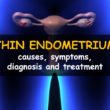Osteoporosis refers to a medical condition, in which the bones lose its tissue, leading to becoming fragile and brittle. Due to the decreased bone strength, the risk of having a broken bone increases. Bones that usually break usually include the bones of the forearm, the bones of the back, and the hip bones.
The bone loss in osteoporosis increases following menopause, due to low estrogen levels. Other causes of the bone condition include kidney disease, hyperthyroidism, anorexia, and alcoholism, in addition to the intake of medications like steroids, selective serotonin reuptake inhibitors, proton pump inhibitors, antiseizure medications, and chemotherapeutic agents.
Incidence
According to International Osteoporosis Foundation, osteoporosis is viewed as a serious health problem, since more than 200 million people worldwide suffer from the disease and nearly 30 percent of the postmenopausal women in the United States and Europe have osteoporosis. As per the publication, about 40 percent of the women and 15 to 30 percent of men will endure one or more fragility fractures within their lifespan while the aging population will be responsible for a rise in the incidence of the medical condition in postmenopausal women. It is also projected that by 2050, the global incidence of hip fracture will increase by 240 percent in women and 310 percent in men.
Osteoporosis is more common than other diseases and it is assumed that the consequences of fractures include death. In fact, a person with osteoporosis may stay longer in hospital than those suffering from myocardial infarction, diabetes, and breast cancer.
Signs and Symptoms
Due to bone loss, the usual signs and symptoms of osteoporosis include back pain secondary to fracture or collapsed vertebra, loss of height over time, a stooped posture, and a bone fracture that happens more easily than assumed, as per Mayo Clinic.
Management
According to Web MD, prevention is essential to the management of osteoporosis, as it prevents fractures that are painful and this involves nutrition and regular exercise. As per the publication, a high calcium diet serves as the cornerstone of osteoporosis treatment and prevention. Excellent sources of calcium include dairy products like yogurt, low-fat milk, ice cream, cheese; green vegetables like collard greens and broccoli; salmon; sardines; and tofu. Vitamin D supplements are also taken with the calcium source to enhance the mineral absorption.
Exercises are typically weight-bearing in nature, as they force the body to work against gravity. The exercises include aerobics, dancing, stair climbing, walking, and working out, which help maintain bone stability and prevent them from having fractures.
Hormone replacement therapy, which is either estrogen or a combination of estrogen and progestin, is part of osteoporosis treatment and prevention. As per the Woman’s Health Initiative Study, it is agreed that estrogen may reduce risk of fractures, but can also slightly increase risks of other diseases. As per Web MD, hormone replacement therapy escalates the risk of stroke, heart disease and breast cancer in women.
Medications for osteoporosis include Fosamax, Binosto, Actonel, and Boniva. Their mode of action is to prevent the cells from breaking down the bone tissue. The first three are typically taken once a week. On the other hand, Boniva is taken once a month. They are taken with caution, since they can result to ulcers in the esophagus.
Seeing a Doctor
A person may want to talk to the physician about osteoporosis if she had gone through early menopause, had taken corticosteroids for the past few months, or either of the parents had had hip fracture. Also, the doctor should be contacted if the person develops a backache or sudden severe back pain. This may indicate spinal compression fracture secondary to the disease process.












